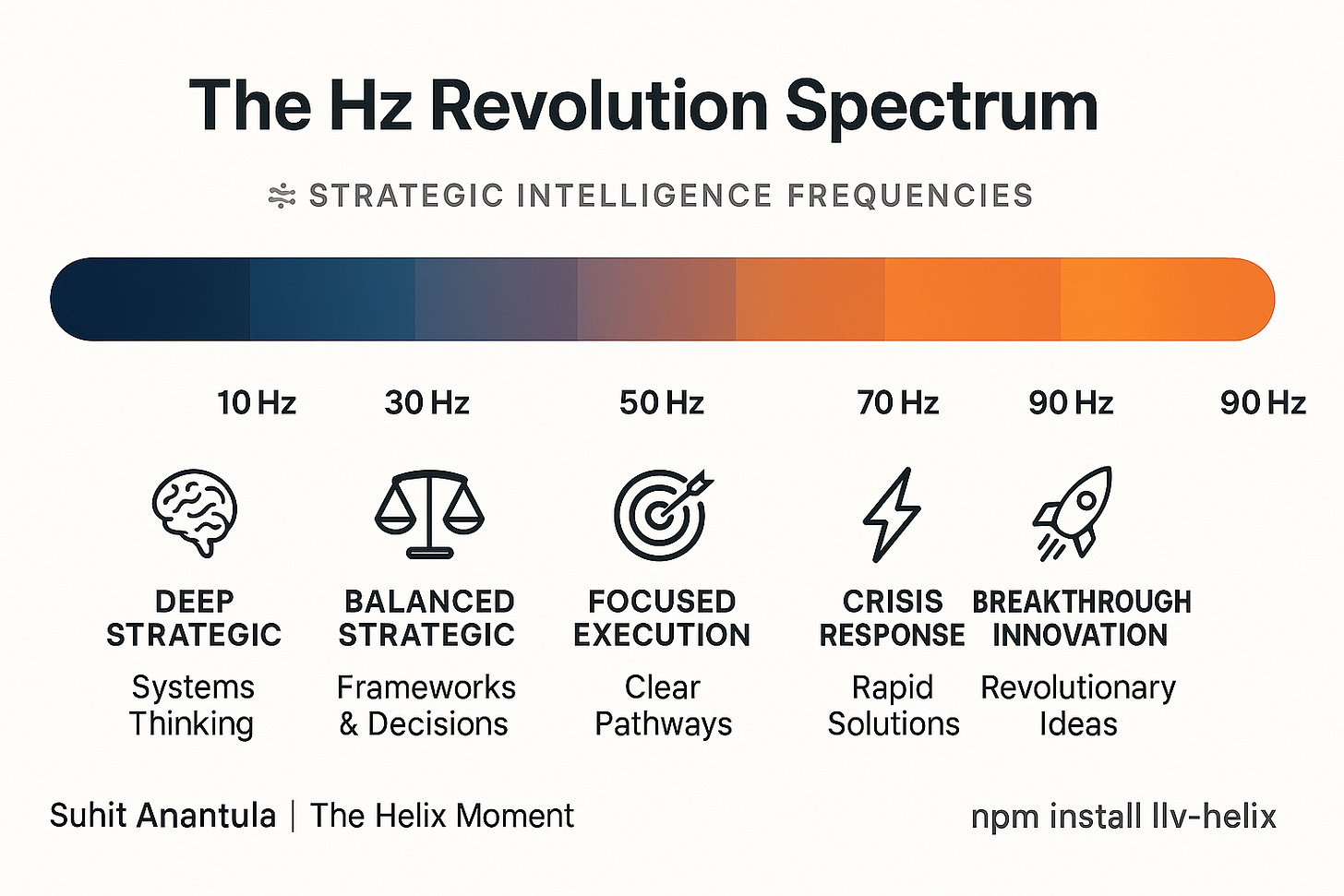Strategic Intelligence as Code
Co-Intelligence & Code
One of the key ideas of The Helix Moment is co-intelligence. This is about enhancing our work as humans, organisations, and teams in strategy and design with AI. The real challenge and opportunity lie in how we work together to create this co-intelligence.
I started with a GPT for the book. Readers can explore, understand, and apply the methodology directly. But I wanted to go further: what if we could embed strategic intelligence itself into AI?
That question led to the LLV MCP (Lines, Loops, Vibes Model Context Protocol) — the first attempt to code strategy into AI.
From Mindsets to Frequencies
Anthropic’s Claude introduced MCPs to extend AI with new capabilities. You can connect it to Notion, Salesforce, or even a search API. One of their first MCPs was for sequential thinking, to help AI avoid skipping steps.
That made me wonder: what if we created an MCP for strategy?
With the LLV MCP, you don’t just “ask” AI to think differently. You dial in the frequency of intelligence you want. Instead of vague mindsets or personas, you tune the cognitive state like adjusting a dial on a radio.
⚡ The Hz Revolution
The LLV MCP introduces a frequency-based approach to strategy. Instead of over-explaining context in a prompt, you shortcut by selecting the optimal frequency for the challenge.
This starts to create strategic intelligence as code.
Example: One Company, Multiple Frequencies
Imagine a global company using the LLV MCP across different challenges:
Ultra Deep Strategic (10–20Hz) to map a ten-year market evolution and competitive landscape.
Balanced Strategic (30–40Hz) to prepare resource-allocation options for a board meeting.
Focused Execution (50–60Hz) to run a 90-day implementation roadmap.
High-Energy Crisis (70–80Hz) when a major supply chain shock requires rapid-fire solutions.
Breakthrough Innovation (90–100Hz) to explore new AI-native business models.
The same organisation. The same AI. But radically different cognitive frequencies — tuned on demand.
Rhythm Engineering: Beyond Prompt and Context
Underneath Strategic Intelligence as Code sits a new discipline: Rhythm Engineering.
In the early days, we learned prompt engineering — how to word inputs so AI responds well. Then came context engineering — how to shape the data and environment AI draws from. Both remain vital. But neither touches the deeper layer of how AI thinks with us.
This is where Rhythm Engineering enters. Instead of only shaping what we ask or what data we feed, we orchestrate the cognitive frequencies of AI. We decide when to work in Lines for structure, when to loop iteratively, and when to expand into vibes and emergence. Rhythm Engineering makes it possible to tune these frequencies on demand, so strategy becomes dynamic, living, and coded.
Evolution of AI Interaction
┌──────────────────────────┐
│ Prompt Engineering │
│ "What do I ask?" │
│ → Wording + syntax │
└──────────────────────────┘
│
▼
┌──────────────────────────┐
│ Context Engineering │
│ "What do I give it?" │
│ → Data + environment │
└──────────────────────────┘
│
▼
┌──────────────────────────┐
│ Rhythm Engineering │
│ "How do we think │
│ together?" │
│ → Frequencies + │
│ strategic modes │
└──────────────────────────┘Why this matters
Strategy is usually slow, messy, and inconsistent. With Strategic Intelligence as Code, you can simplify the process:
Need deep strategic vision? Set 10–20Hz.
Need creativity and breakthrough thinking? Jump to 90–100Hz.
Need urgency and decisions? Work at 70–80Hz.
It makes complex strategic and creative work simple, practical, and ready to explore.
Open Source Invitation
The LLV MCP is live, MIT-licensed, and open source. Right now it is a bit technical (install via NPM and edit a config file), but it is ready for experimentation:
https://github.com/suhitanantula/llv-helix
If you’re curious:
Install it and try setting different frequencies
Hack it, extend it, and contribute new rhythms
Share how you use it in strategy, design, or innovation
Strategic intelligence is no longer abstract. It is code. And now, it is frequency.
You can learn more about my work at suhitanantula.com


